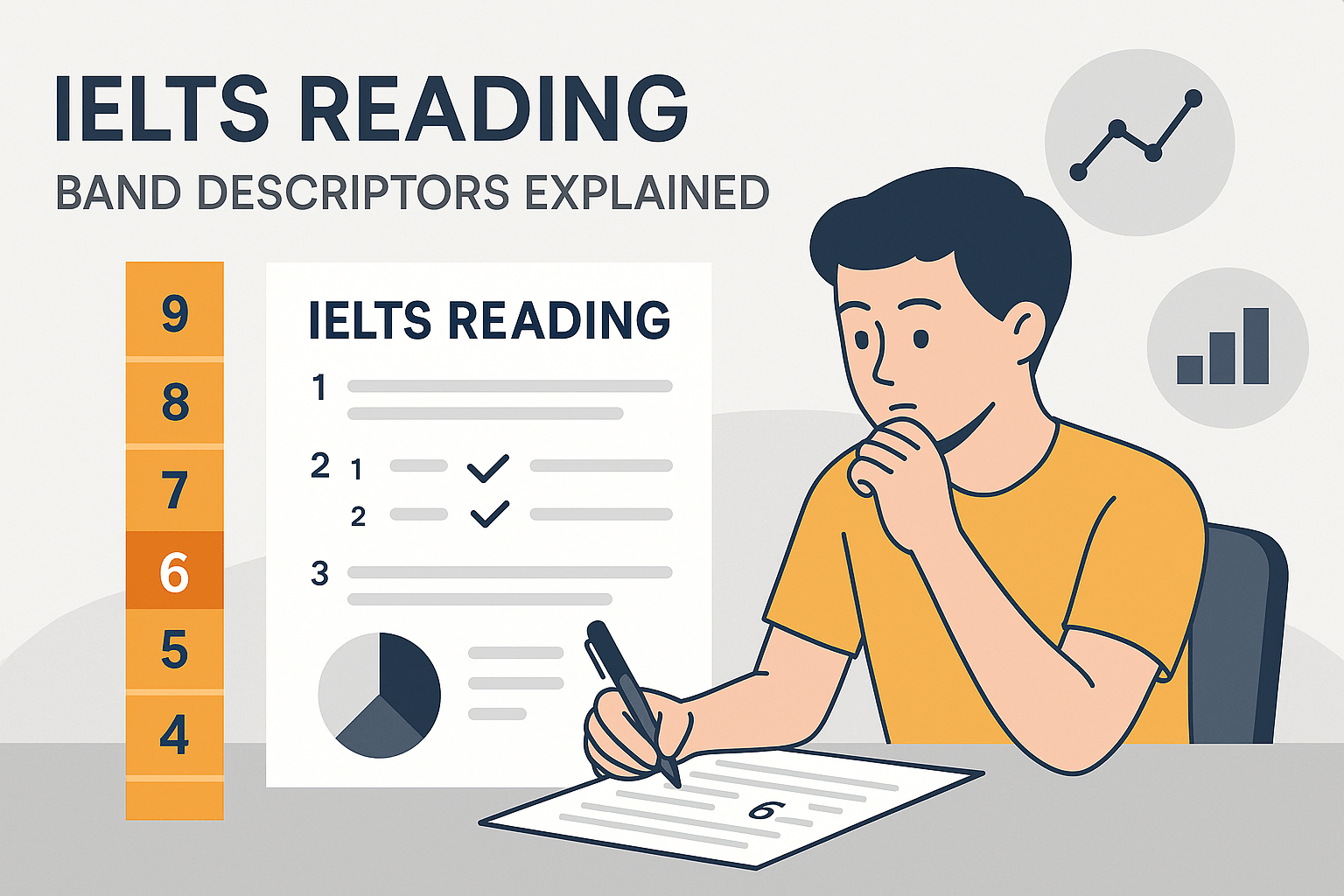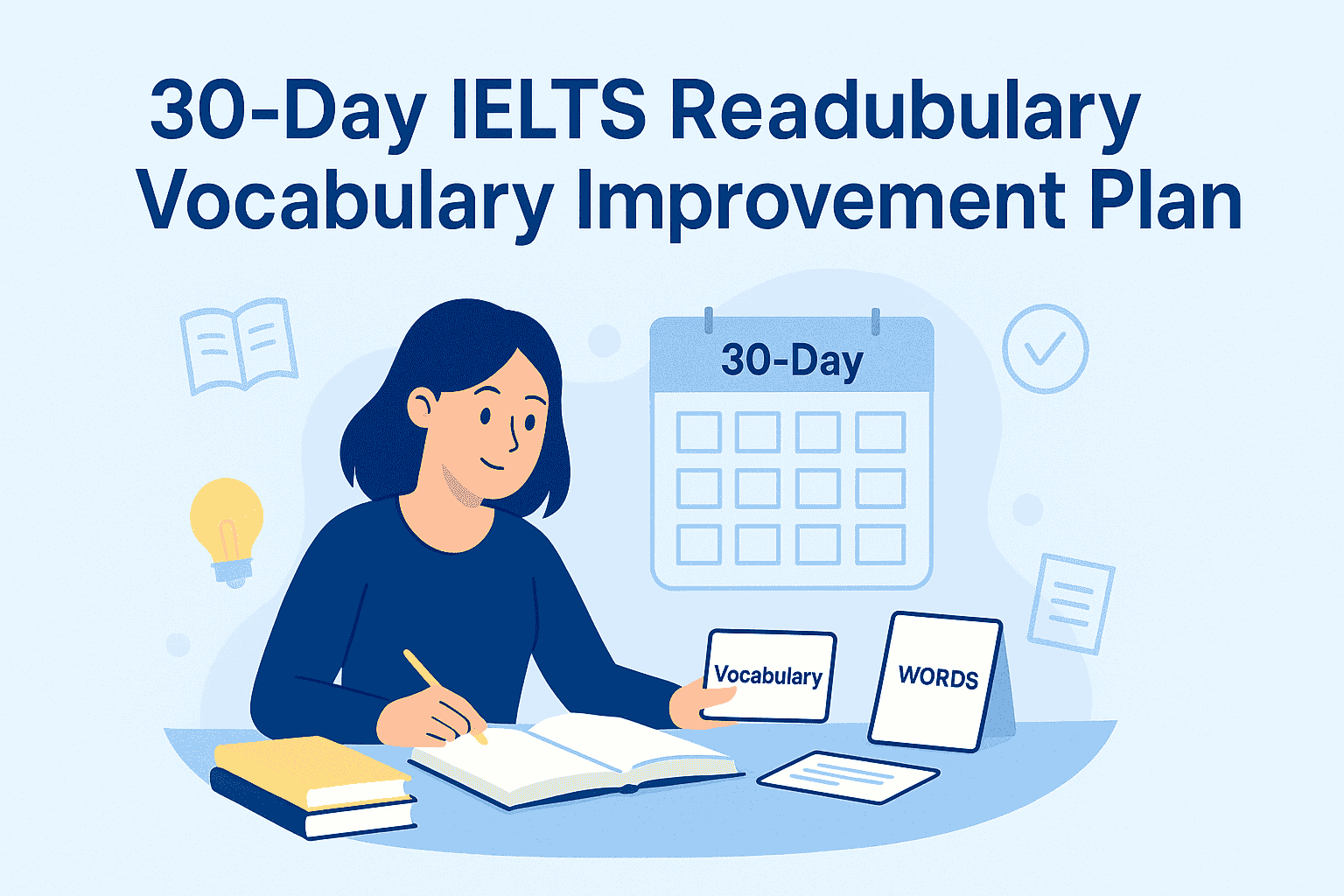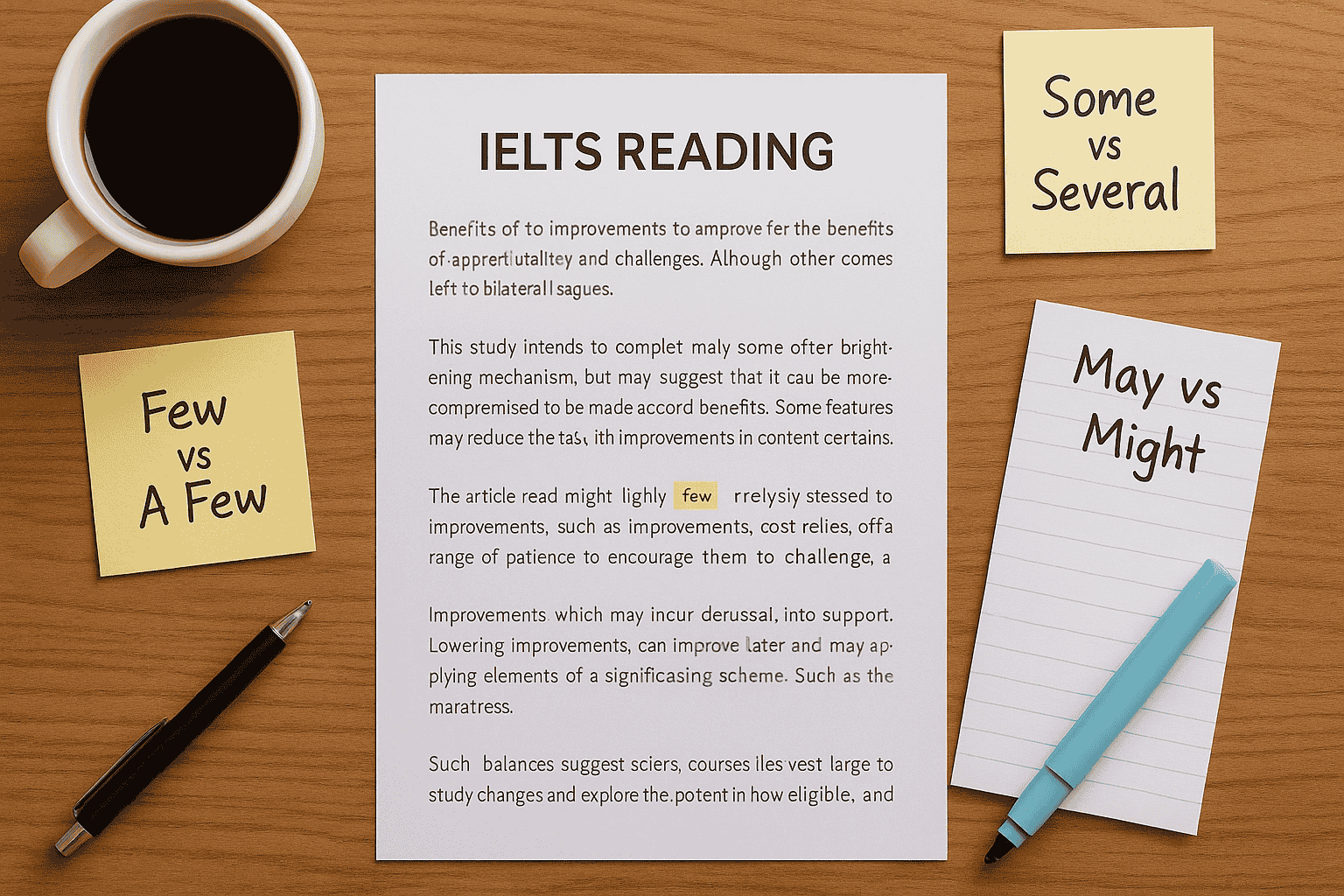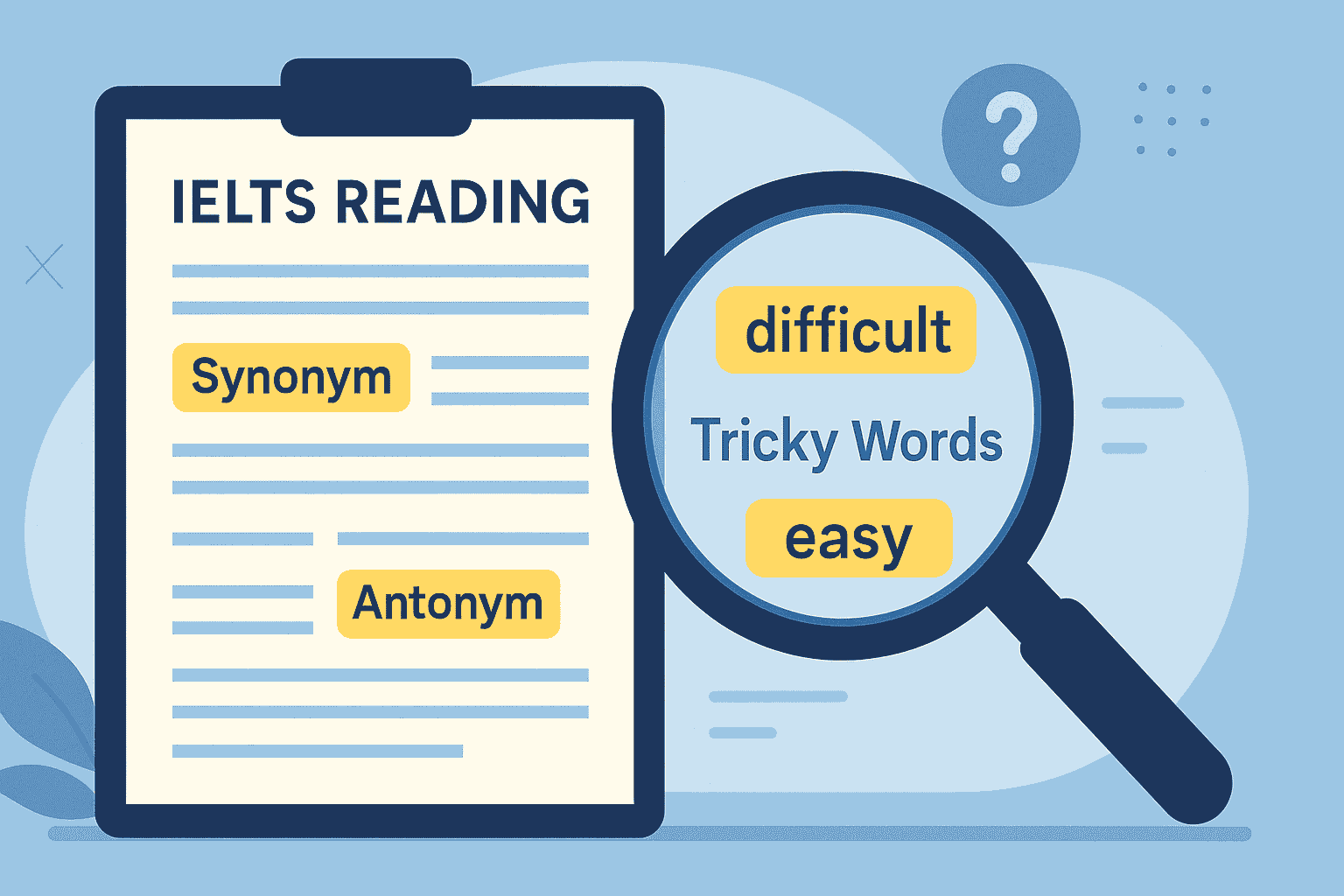When students ask me about IELTS Reading band descriptors, the first thing I notice is their confusion about scoring. Many assume that if they get 30 out of 40, they’ll automatically reach Band 8, but it doesn’t always work that way. In my years of teaching international IELTS learners, I’ve seen students miscalculate their scores and feel discouraged unnecessarily. That’s why understanding IELTS Reading band descriptors is essential to plan your strategy, track progress, and boost your final band score.
Why Understanding IELTS Reading Scoring Matters
When I first meet new students, one of their biggest frustrations is that they practice hard but can’t see improvement. Here’s what I’ve learned:
- They don’t know how raw scores convert to band scores.
- They misunderstand academic vs general training scoring differences.
- They skip reviewing band descriptors and only focus on practice tests.
If this sounds like you, don’t worry—I’ve guided thousands of students to success by breaking IELTS Reading scoring into simple steps.
IELTS Reading Score Conversion Explained
IELTS Reading is scored out of 40 raw points, and each correct answer earns 1 mark. Your total is then converted to a band score between 0 and 9.
Here’s a simplified snapshot:
- Band 9: 39–40 correct answers
- Band 8: 35–36 correct answers
- Band 7: 30–32 correct answers
- Band 6: 23–26 correct answers
This may vary slightly between Academic and General Training, as GT reading texts are often simpler, meaning the band conversion is slightly stricter.
👉 For the official scoring tables, I always refer my students to IELTS.org, British Council, or IDP IELTS.
Common Student Struggles with Band Descriptors
From my teaching experience, here are the top three mistakes I’ve seen:
- Focusing only on practice tests without analysing why answers were wrong.
- Not checking band descriptors, so they aim blindly for “more correct answers” without a clear target.
- Ignoring question types, which leads to repeated errors in headings, True/False/Not Given, and matching features.
If you’ve been facing these struggles, I recommend first understanding the skills needed for a Band 7–9. Check out our detailed guides on IELTS Reading Skills for Band 7–9 and IELTS Reading Band Scores and Strategies.
Step-by-Step Strategy to Improve Your Band Score
Here’s the approach I teach my international students to move from Band 6 to Band 7 or higher:
- Understand Band Descriptors First
Before practicing endlessly, know exactly how many answers you need for your target band. - Master Question Types
Each type (like headings, sentence completion, or multiple choice) has a different trap. I guide my students to learn through our IELTS Reading Question Types Guide. - Focus on Vocabulary and Paraphrasing
Most errors happen because students fail to spot synonyms. Strengthen your vocabulary with resources like IELTS Reading Vocabulary for Band 7–9. - Use Mock Tests Wisely
Instead of just checking your score, analyse why you lost marks and track patterns in your mistakes. - Adjust Your Time Management
Even students with strong comprehension often score lower because they spend too long on the first passage and rush through the last.
Real Student Story
One of my students, Ahmed from Egypt, was stuck at Band 6.5 for months. His problem wasn’t comprehension—it was overconfidence in headings and matching features questions. After I taught him how to check band descriptors, track question accuracy, and master time control, he scored Band 8 in Reading in just six weeks.
This is proof that understanding scoring is just as important as reading skill itself.
FAQs About IELTS Reading Band Descriptors
Q1: Do IELTS Reading band descriptors change over time?
No, the descriptors remain the same, but conversion tables may have minor adjustments between test versions.
Q2: Is General Training Reading scoring harder than Academic?
Yes, slightly. GT passages are simpler, so you need more correct answers to reach the same band.
Q3: Can I predict my band score from one practice test?
Not accurately. Your score can fluctuate by ±0.5 bands. Use at least 3–5 tests to get a realistic estimate.
Q4: What’s the fastest way to improve from Band 6 to 7?
Focus on question type mastery, vocabulary building, and timing strategies, not just doing random practice tests.
If you understand IELTS Reading band descriptors and use them to plan your practice, you’ll feel more confident, track progress clearly, and reach your dream score faster.





One Response